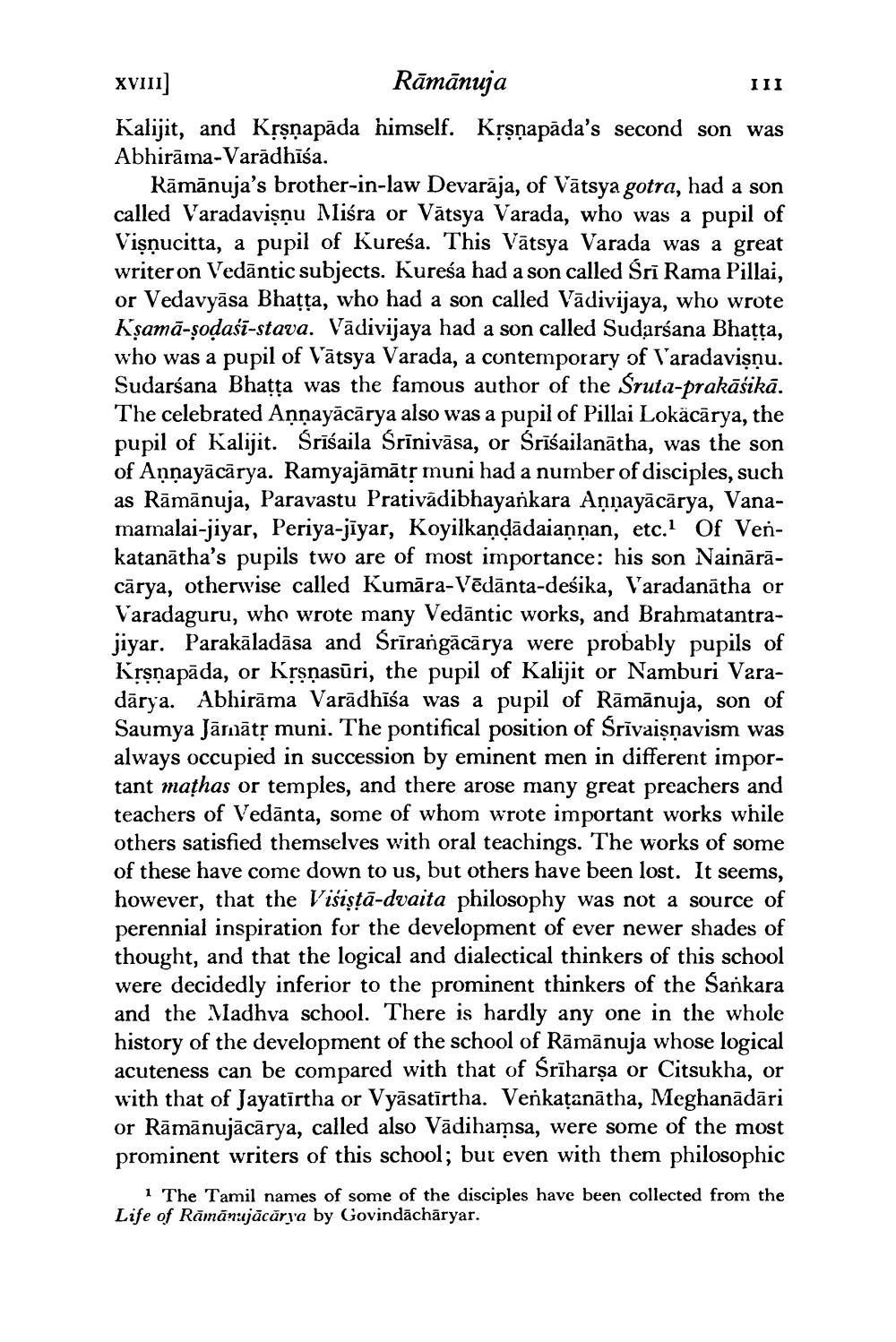________________
XVIII) Rāmānuja
III Kalijit, and Krşņapāda himself. Krsnapāda's second son was Abhirama-Varādhisa.
Rāmānuja's brother-in-law Devarāja, of Vātsya gotra, had a son called Varadavişnu Mliśra or Vātsya Varada, who was a pupil of Vişnucitta, a pupil of Kureśa. This Vātsya Varada was a great writer on Vedāntic subjects. Kureśa had a son called Śrī Rama Pillai, or Vedavyāsa Bhatta, who had a son called Vādivijaya, who wrote Kşamā-sodašī-stava. Vādivijaya had a son called Sudarśana Bhatta, who was a pupil of Vātsya Varada, a contemporary of Varadavişnu. Sudarśana Bhațța was the famous author of the Śruta-prakāśikā. The celebrated Annayācārya also was a pupil of Pillai Lokacārya, the pupil of Kalijit. Srībaila Śrīnivāsa, or Śrīśailanātha, was the son of Annayācārya. Ramyajāmāts muni had a number of disciples, such as Rāmānuja, Paravastu Prativādibhayankara Annayācārya, Vanamamalai-jiyar, Periya-jīyar, Koyilkaņdādaiannan, etc. Of Venkatanātha's pupils two are of most importance: his son Nainārācārya, otherwise called Kumāra-Vēdānta-desika, Varadanātha or Varadaguru, who wrote many Vedāntic works, and Brahmatantrajiyar. Parakāladāsa and Srīrangācārya were probably pupils of Krsnapāda, or Krsņasūri, the pupil of Kalijit or Namburi Varadārya. Abhirāma Varādhīša was a pupil of Rāmānuja, son of Saumya Jānāts muni. The pontifical position of Śrīvaişņavism was always occupied in succession by eminent men in different important mațhas or temples, and there arose many great preachers and teachers of Vedānta, some of whom wrote important works while others satisfied themselves with oral teachings. The works of some of these have come down to us, but others have been lost. It seems, however, that the Visisțā-dvaita philosophy was not a source of perennial inspiration for the development of ever newer shades of thought, and that the logical and dialectical thinkers of this school were decidedly inferior to the prominent thinkers of the Sankara and the Madhva school. There is hardly any one in the whole history of the development of the school of Rāmānuja whose logical acuteness can be compared with that of Srīharsa or Citsukha, or with that of Jayatirtha or Vyāsatīrtha. Verkațanātha, Meghanādāri or Rāmānujācārya, called also Vādihamsa, were some of the most prominent writers of this school; bur even with them philosophic
1 The Tamil names of some of the disciples have been collected from the Life of Rāmānujācārya by Govindācharyar.




